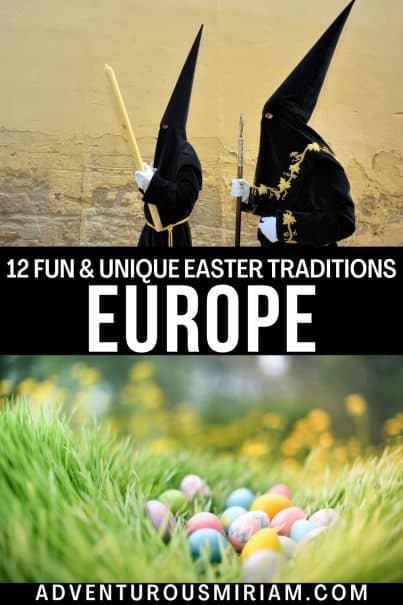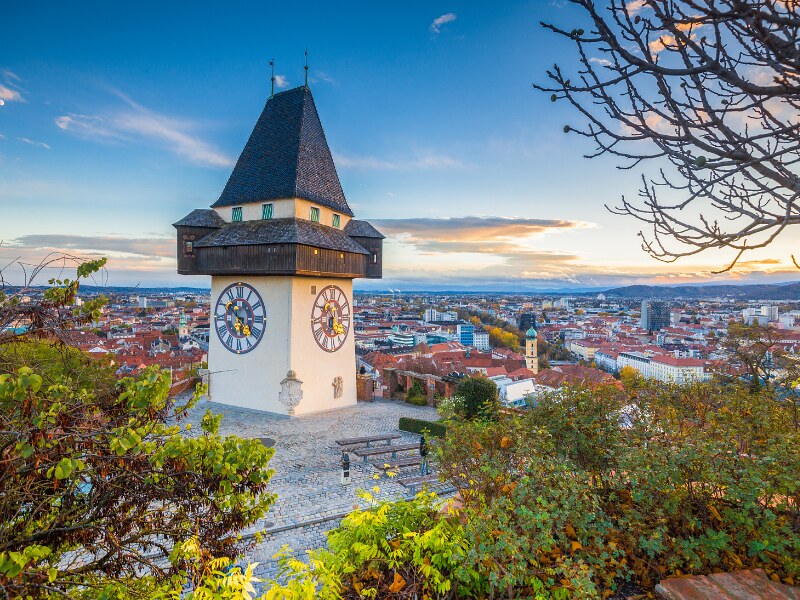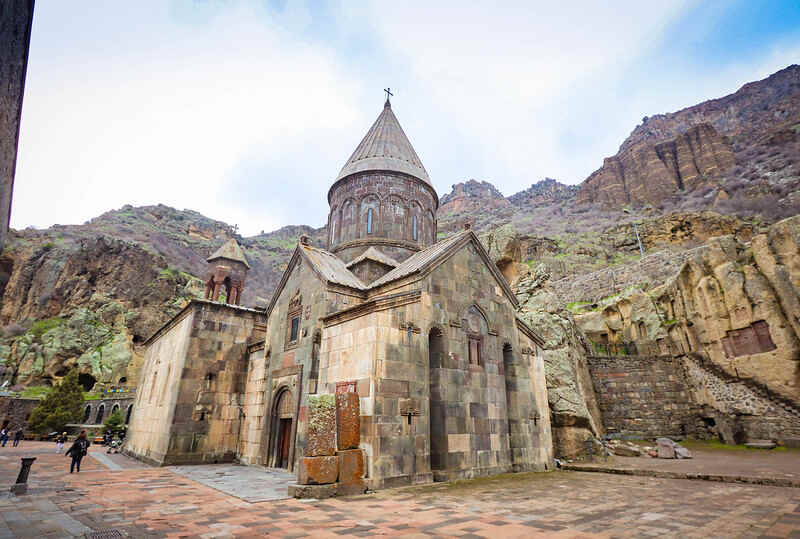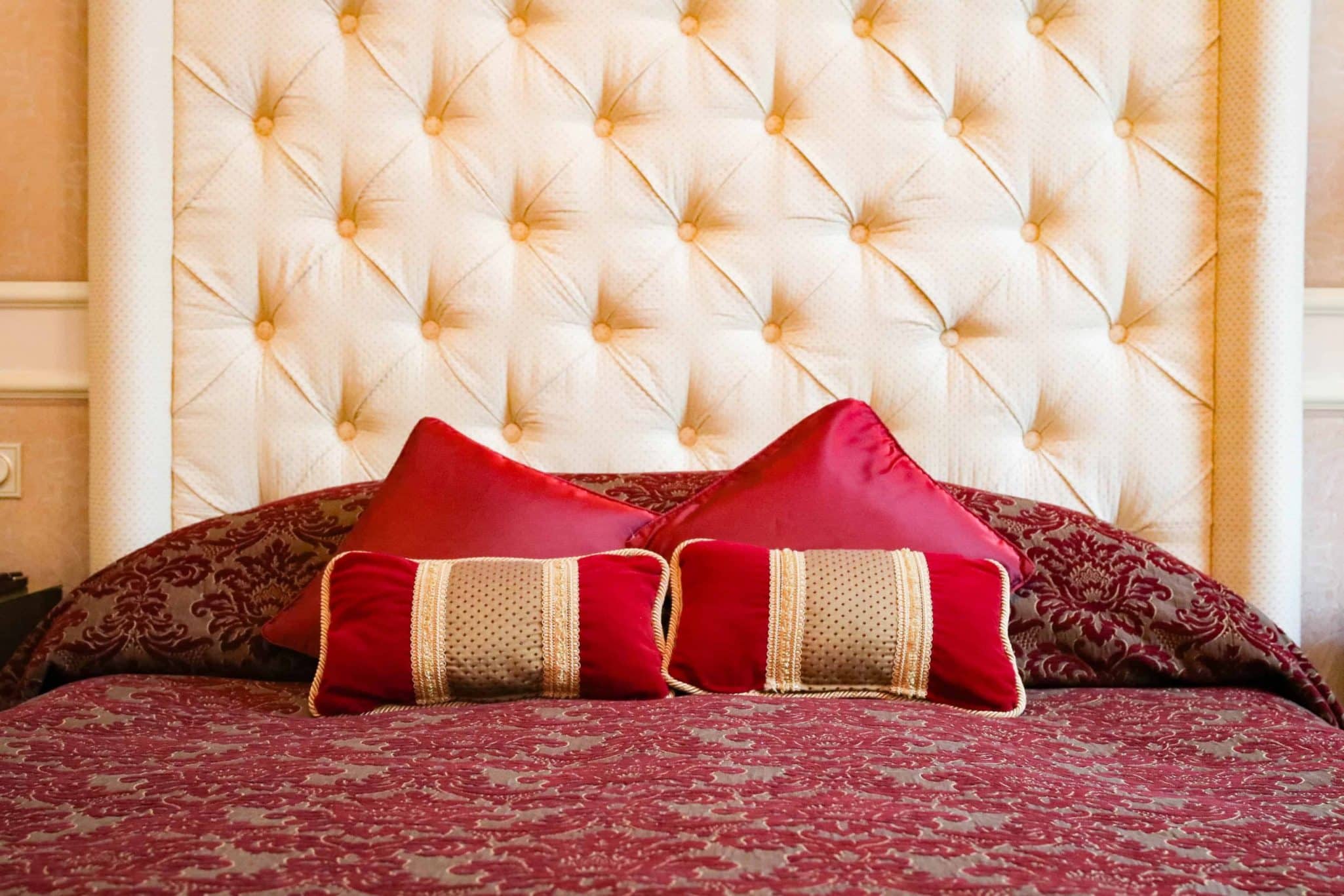12 fun and unique Easter traditions in Europe (2024)
Are you looking for local Easter traditions in Europe? You’re in for a cultural treat!
As a Dane, I’ve lived in Europe all my life and have experienced many fun and odd traditions for Easter over the years.
From mysterious Easter letters in Denmark to pot throwing in Greece and Semana Santa processions in Spain, there’s a lot of variety!
So, here’s my quick guide to the most unique Easter celebrations in Europe.
This post contains referral links for products I love. Adventurous Miriam earns a small commission at no extra cost to you if you purchase through my links. I appreciate your support ♡ Learn more
Special Easter Traditions in Europe
Easter Traditions in Scandinavia
Let’s begin with my corner of the world: Scandinavia.
Each country has its own Easter rituals – some of them are religious and others are simply unique local customs.
1. Sweden and Finland: Easter Witches
On Maundy Thursday in Sweden and parts of Finland, you might think Halloween came early.
Kids dress up as Easter witches with long skirts, headscarves, and painted red cheeks. They go door-to-door, exchanging drawings and well-wishes for candy, similar to trick-or-treating.

2. Norway: Easter Crime
It’s no joke — Norway has a peculiar tradition of Easter Crime or Påskekrim.
During Easter, you read Nordic Noir crime novels, watch detective shows, and solve mystery puzzles. Publishers even release special crime fiction series known as “Easter Thrillers” just for this season.
Read next: 20 best places to visit in Europe in April
3. Denmark: Mysterious letters
In Denmark, we have this Easter tradition where children send anonymous cut-out letters with a riddle to someone they know.
They’re called Gækkebreve and can sound like this:
🐣 Gæk, gæk, gæk! Guess your way to an Easter egg.
Love from ……
The letter is signed with dots for each letter in their name. Guess who sent it, and you get a chocolate egg.
Can’t guess? You give them the egg. It’s a fun tradition.
Southern European Customs
In Southern Europe, they celebrate Easter with unique traditions steeped in centuries of history.
You’ll find everything from dramatic processions to explosive festivities – they’re pretty impressive, to say the least.
4. Corfu, Greece: Pot Throwing
On Holy Saturday, watch out for falling pottery!
In Corfu, it’s tradition for people to throw pots out of windows, crashing onto the streets below – watch it on video here.
This symbolizes the welcoming of spring and embodies a spirit of renewal and expectation for good crops.

5. Spain: Semana Santa Processions
In Andalusia, Easter is a very big deal!
You might even have seen images of a Semana Santa parade with those pointy hats and robes. Don’t worry, there’s no dark link to that certain white supremacist group.
Semana Santa in Andalusia is a week-long celebration from Palm Sunday to Easter Sunday.
Each day, groups carry heavy floats with Jesus and the Virgin Mary in processions to the Cathedral, accompanied by music.
Flamenco, especially in places like Granada’s Sacromonte, is a key part of the celebration with planned saeta performances.

6. Italy: Scoppio del Carro
Italian Easter traditions include the “Explosion of the Cart”.
This happens in Florence where a cart packed with fireworks is ignited in front of the Duomo.
This loud and lively display, happening on Easter Sunday, is believed to ensure a good harvest and is accompanied by a parade in historical attire.
Central European Practices
In Central Europe, you’ll also find unique customs and quirky practices from water fights in Poland to the crackle of Easter fires in Germany.
7. Poland: Smigus-Dyngus
On Easter Monday, you’d better stay alert in Poland.
The tradition of Smigus-Dyngus, or Wet Monday, involves playful water fights. Arm yourself with water guns or buckets – nobody is off-limits.
8. Hungary: Sprinkling
Hungary offers a fragrant twist to Easter Monday.
Men perform a ‘sprinkling‘, reciting a poem, and lightly spraying perfume or water on women as a sign of affection.
9. Czech Republic and Slovakia: Willow Whipping
It might sound harsh, but the willow whipping in the Czech Republic and Slovakia is meant for good fun.
Decorated willow branches are used to lightly tap women, thought to bring health and youth.
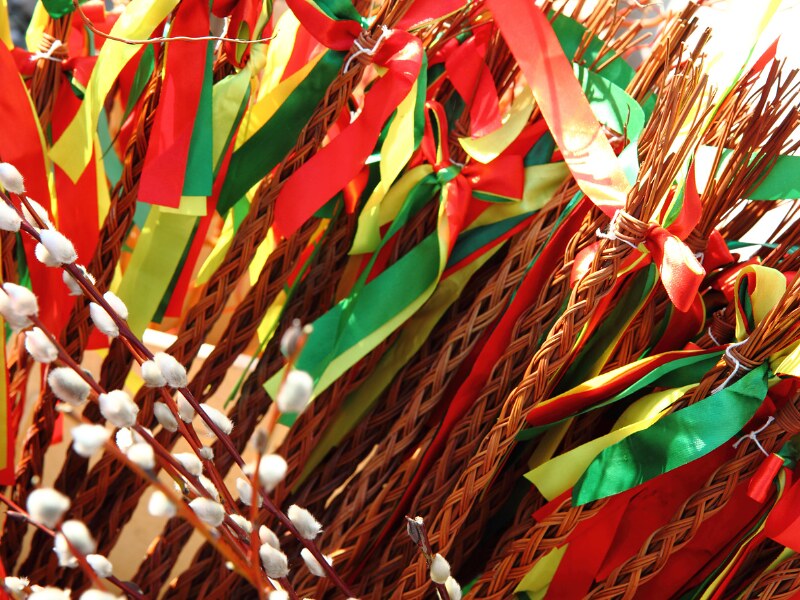
10. Germany: Easter Fires
As dusk falls on Holy Saturday, you’ll witness Easter fires in Germany.
They symbolize the end of winter and light the way into spring. It’s a warm, community-driven event.

Unique Celebrations
Easter in Europe comes with some quirky traditions that might surprise you. From large-scale culinary feats to competitive games, there’s much to explore.
11. France: Giant Omelet
In the French town of Haux, you’ll witness the making of a giant omelet on Easter Monday.
This tradition calls for cracking over 4,500 eggs into a massive pan, so there’s enough omelet for the whole community.
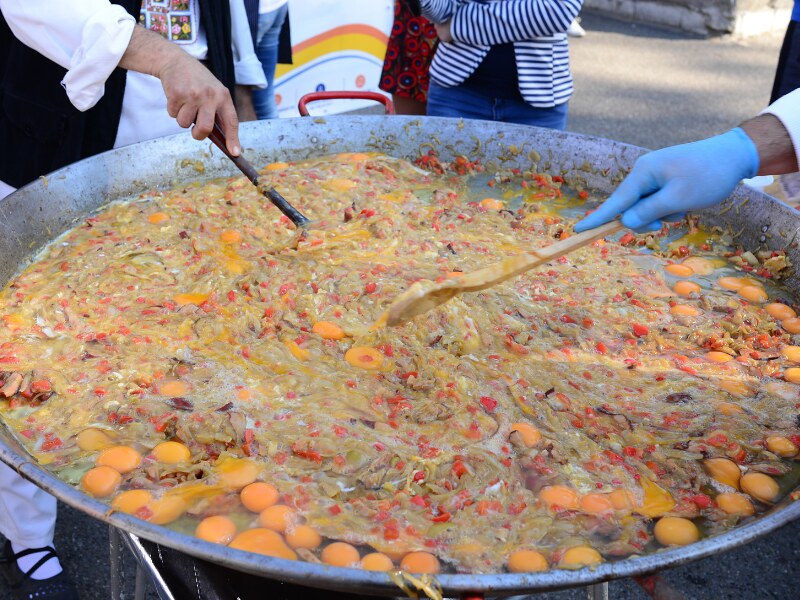
12. United Kingdom: Egg Rolling
A fun Easter event in the UK is egg rolling.
One famous location for this is Preston’s Avenham Park.
Here, you and your hard-boiled eggs will tumble down hills in a spirited race to see whose egg goes the furthest.
FAQ – Easter traditions in Europe
Is the Easter Bunny a thing in Europe?
Yes, the Easter Bunny is a thing in some parts of Europe, but it’s not as widespread as in the U.S.
Countries like the UK and Germany have Easter Bunny traditions, but in many European countries, Easter is more about religious and local customs.
What are the Easter traditions in Eastern Europe?
Easter traditions in Eastern Europe vary. They often include attending church services, painting eggs, and special meals with family.
In countries like Poland and Ukraine, there’s the Święconka, where baskets of food are blessed.
Many places have unique customs, like water fights in Hungary or the “Willow Sunday” celebrations in Russia and Bulgaria.
How is Good Friday celebrated in Europe?
Good Friday in Europe is typically a solemn day, marked by church services and reflection.
Many countries have public processions, like the famous ones in Spain. In some places, like the UK, there are also traditional foods eaten, like hot cross buns.
What do Italians do on Easter?
On Easter, Italians usually attend a special church service. The day is also about family gatherings, where they enjoy a big meal together.
Traditional foods like lamb, artichokes, and special Easter breads and pastries are common. Many regions have their own customs, like the Scoppio del Carro fireworks in Florence.
Do they have Easter eggs in Europe?
Yes, Easter eggs are a common tradition in Europe. They’re often painted and used in various games and decorations.
Some countries also have chocolate Easter eggs, similar to those in the U.S. and UK.
The tradition of Easter eggs is a significant part of Easter celebrations across the continent.
Why is Easter different in Europe?
Easter in Europe varies because each country has its own way of doing things.
Some places focus more on church and religious customs, like street parades in Spain or painting eggs in Eastern Europe.
What do Germans call the Easter Bunny?
Germans call the Easter Bunny “Osterhase,” which translates to “Easter Hare.”
What is Easter called in Europe?
In Europe, Easter is generally called “Easter” in English-speaking countries, “Pâques” in France, “Pasqua” in Italy, “Ostern” in Germany, and “Semana Santa” in Spain for Holy Week.
Each country has its name reflecting its language and traditions.
More posts about Europe
- 15 best places to spend Easter in Europe
- 21 best places to visit in Europe in March
- 55 major landmarks in Europe you should visit
- 27 best European cities for New Years
Save it!
